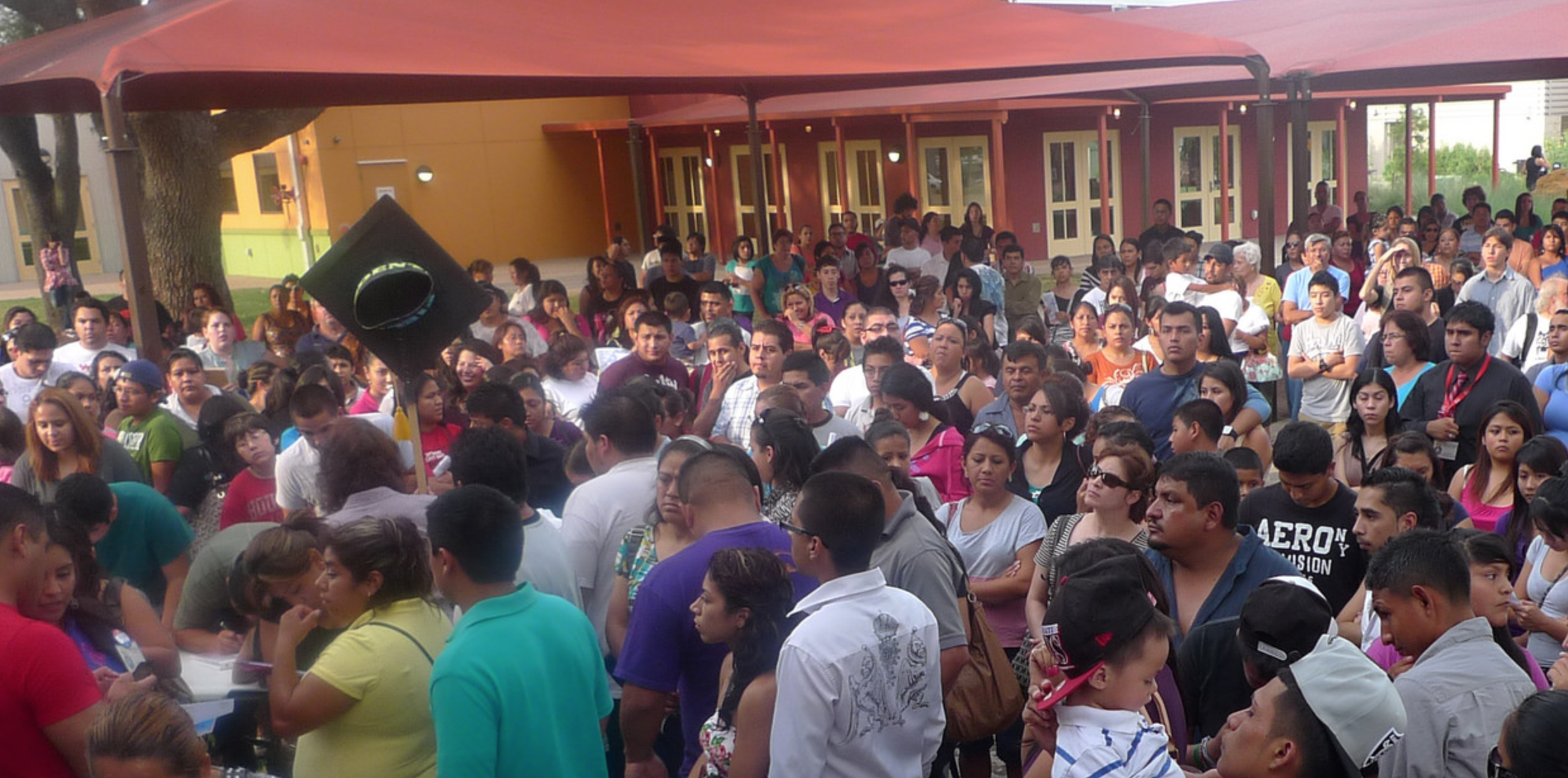This item was originally published in the August 2017 issue of Governing magazine.
 A DREAMer Information Summit at Baker Ripley Neighborhood Center in 2012. Courtesy Neighborhood Centers Inc.
A DREAMer Information Summit at Baker Ripley Neighborhood Center in 2012. Courtesy Neighborhood Centers Inc.
Houston’s port-of-entry community, Gulfton, isn’t where you think it would be. It’s 10 miles west of downtown Houston, far away from most job centers, removed from service providers and not especially well served by public transit. Yet Gulfton is where Houston’s refugee community -- the biggest in the country -- is centered.
Gulfton turned into the port-of-entry neighborhood more or less by chance: Its old apartment buildings from the 1960s and 1970s had been abandoned by the middle class and were cheap. The community is a good example of how emerging urban issues in the Sun Belt look different from similar ones in more traditional cities.
Like other Sun Belt cities from Atlanta to San Diego, Houston is newer, more suburban and more auto-oriented in nature. But its suburbs, such as Gulfton, are getting more ethnically diverse and poorer: Low-wage workers are being displaced from central locations by gentrification, making commuting expensive and difficult.
Of course, none of these problems is specific to the Sun Belt, but the way they manifest themselves on the landscape is. And that poses a problem for conventional urban policy thinking, which is focused on traditional cities in the Northeast and Rust Belt -- cities that often have higher density, strong public transit systems and concentrated job centers. Struggling Sun Belt neighborhoods, on the other hand, are characterized by single-family homes, low-rise development and a suburban street grid that’s sometimes close to indistinguishable from affluent neighborhoods.
Sun Belt cities also operate in a different political context. Many of them are blue cities in red states, where taxes are low, regulation is light and expectations of government are much more modest than in older parts of the country. The typical tools of urban America, such as higher taxes and tougher regulations like inclusionary housing, are not always available to them. As Sun Belt cities mature -- taking on a second generation of growth that no one ever expected -- they will have to find different ways to tackle urban problems.
Some already have. New models of social services and community development have emerged. Take the Baker-Ripley Neighborhood Center in Gulfton. It takes a comprehensive approach to services by providing everything in one spot, from tax preparation to financial literacy to a charter school. Or take the Purpose-Built Communities model for community revitalization, which materialized from a public housing project in Atlanta that provides social services onsite. New innovative public transit solutions are beginning to surface as well, ones that revolve around light rail systems in most of these cities.
All this can be hard for the folks on the coasts to grasp. It’s not easy to get your mind around wide-open spaces in poor neighborhoods or auto-oriented communities of apartment complexes from the 1970s. But that’s the future of much of urban America. Since 2010, almost half of all American population growth has occurred in the Sun Belt’s 20 metro areas of 1 million people or more. Here’s hoping that America’s urban policy framework will catch up to Sun Belt population growth.

